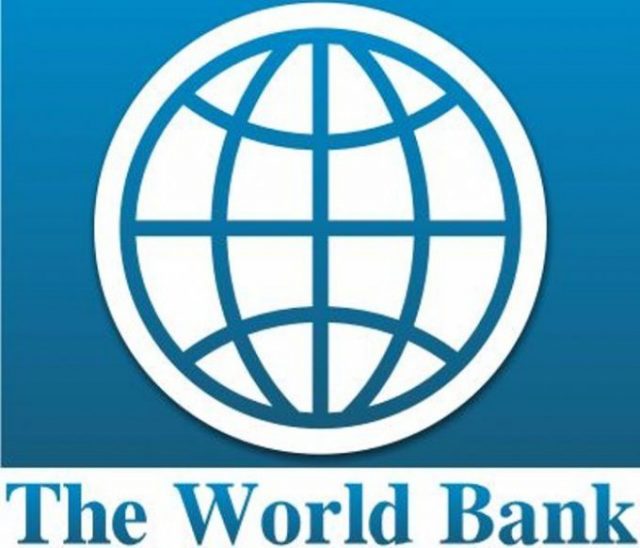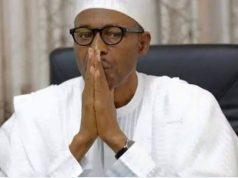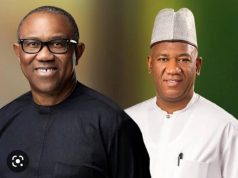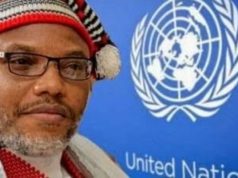by Omenihu Alfred
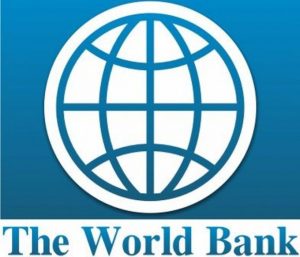 Poverty according to Wikipedia can be measured in different ways by governments, international organizations, policy makers and economic practitioners. Increasingly, poverty is understood as multidimensional, comprising social, natural and economic factors situated within wider socio-political processes. The capabilities approach also argues that capturing the perceptions of poor people is fundamental in understanding and measuring poverty. When measured, poverty may be absolute or relative. Absolute poverty refers to a set standard which is consistent over time and between countries while Relative poverty, in contrast, views poverty as socially defined and dependent on social context. One relative measurement would be to compare the total wealth of the poorest one-third of the population with the total wealth of the richest 1% of the population. In this case, the number of people counted as poor could increase while their income rises. Although absolute poverty is more common in developing countries, poverty and inequality exist across the world.
Poverty according to Wikipedia can be measured in different ways by governments, international organizations, policy makers and economic practitioners. Increasingly, poverty is understood as multidimensional, comprising social, natural and economic factors situated within wider socio-political processes. The capabilities approach also argues that capturing the perceptions of poor people is fundamental in understanding and measuring poverty. When measured, poverty may be absolute or relative. Absolute poverty refers to a set standard which is consistent over time and between countries while Relative poverty, in contrast, views poverty as socially defined and dependent on social context. One relative measurement would be to compare the total wealth of the poorest one-third of the population with the total wealth of the richest 1% of the population. In this case, the number of people counted as poor could increase while their income rises. Although absolute poverty is more common in developing countries, poverty and inequality exist across the world.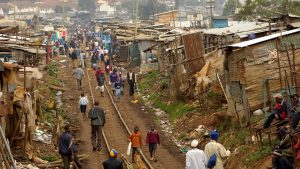
The World Bank defines poverty in absolute terms. For them, extreme poverty is living on less than US$1.90 per day (PPP), and moderate poverty is less than $3.10 a day. It has been estimated that in 2008, 1.4 billion people had consumption levels below US$1.25 a day and 2.7 billion lived on less than $2 a day. The proportion of the developing world’s population living in extreme economic poverty has fallen from 28 percent in 1990 to 21 percent in 2001. Much of the improvement has occurred in East and South Asia. In Sub-Saharan Africa GDP/capita shrank with 14 percent, and extreme poverty increased from 41 percent in 1981 to 46 percent in 2001. Other regions have seen little or no change. In the early 1990s the transition economies of Europe and Central Asia experienced a sharp drop in income. Poverty rates rose to 6 percent at the end of the decade before beginning to recede.
Again, the percentage of the world’s population living on less than $1 per day has halved in 20 years. And most of this improvement has occurred equally in East and South Asia. Hence, life expectancy has been increasing and converging for most of the world. But Sub-Saharan Africa has recently seen a decline. 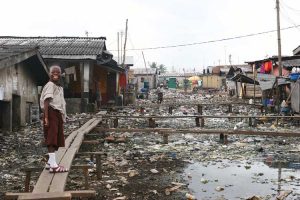
The story of Nigeria and poverty in the global index seems as if Nigeria has covenant with Poverty. God forbid! I know that what you will say. In 2015, the UN set up the Sustainable Development Goals, and the first of them is to “eradicate extreme poverty for all people everywhere by 2030”. However to achieve this globally,90 people need to leave poverty every minute to eradicate poverty totally by 2030; and to achieve this in Africa, 57 people have to leave every minute; and in Nigeria,12 people per minute. Currently, the reverse appears the case in Nigeria. Reason: On the average, seven people descend into poverty every minute. Across the globe and within Nigeria, so many people believe that Nigeria has all it takes to be great that is why so many experts are quick to understudy Nigeria. In the latest World Bank Economic Update, it was declared that Nigeria will sink deeper in extreme poverty if drastic steps are not taken. The forecast stated that the poverty rate in Nigeria could become worse, with up to 30 million more people falling into the extreme poverty trap in a decade time unless Federal Government policy reforms bring about robust productivity and inclusive growth. As it is expected that Nigeria’s population will grow by as much as 35 million in the next decade and unless the pace of growth and job creation accelerates, the country will account for a quarter of all people living in extreme poverty worldwide.
According to Marco Hernandez, World Bank Lead Economist for Nigeria, and co-author of the latest Nigeria Economic Update. “Creating new opportunities for the rapidly increasing labour force will require a new economic model based on productivity growth “Without robust productivity growth, the report warns that living standards will continue to decline and the number of people living in poverty will continue to rise, increasing by more than 30 million by 2030”. It said Nigeria could enable millions of citizens escape poverty over the next decade through enacting bold reforms designed to boost economic productivity. It also recommended that building momentum on reforms are essential to mitigate risks and promote faster, more inclusive and sustainable growth that improves living standards and reduces poverty. Reform areas which the bank identified as critical to Nigeria rapid growth include leveraging trade integration to harness the benefits of the Africa Continental Free Trade Area; Improved basic education financing to improve human capital outcomes; Monitoring the impact of conflict on the welfare of households to protect poor and vulnerable people; and leveraging digital technologies to diversify the economy and create jobs for young workers. With reforms in these and others, the report noted that Nigeria would be able to strengthen its macroeconomic resilience, promote private sector development, and improve the efficiency of public service delivery. In all situation, the federal government needs to be up and doing in sincerity of emerging economic policies.
Early December 2019, THE World Bank warned that Nigeria was heading for an explosive poverty crisis without urgent reforms. Launching its Nigeria Economic Update early in the month, the Bank said the number of extremely poor Nigerians could rise by 30 million by 2030. Of course, with nearly 100 million of its citizens living in extreme poverty, Nigeria has already acquired the sobriquet “poverty capital of the world”, snatching the shameful title from India. But now the World Bank has warned that this country could account for 25 per cent of the world’s extremely poor population by 2030 if it fails to act urgently.
We cannot forget in a hurry, about the 20th August, 2019 declaration of the former British Prime Minister, Theresa May that Most of world’s very poor people are Nigerians. According to her, Nigeria is the home of the highest number of poor people in the world. In her words, “87 million Nigerians are living below the poverty line of $1 and 90 cents per day. Few months before her statement the Brookings Institution named Nigeria the poverty capital of the world, overtaking India, a country with a total population of about 1.3 billion people. According to her needs to create 50,000 new jobs per day to keep employment rate at its current levels till 2035. Her statement came a day after the Vice President, Prof. Yemi Osinbajo, disclosed at the ongoing conference of Nigerian Bar Association, NBA, in Abuja that the Federal Government was committing the sum of N500 billion into wealth creation and poverty alleviation.
Another recall at this juncture, is the Nigeria Poverty Profile Report 2010 by the Nigeria Bureau of Statistics, NBS which revealed that rising Nigeria’s living standard surveys for 1980, 1985, 1992, 1996, 2004 and 2010. According to the report, the percentages of the Nigerian population living under extreme poverty were as follows: 1980 (6.2 per cent), 1985 (12.1 per cent), 1992 (13.9 per cent), 1996 (29.3 per cent), 2004 (22 per cent) and 2010 (38.7 per cent). In 2015, the World Poverty Clock of the World Data Lab in Vienna, Austria stated that 42.4 per cent of Nigerians were living in extreme poverty and in June 2018, the figure was 44.2 per cent.
As of early 2018, Nigeria has already overtaken India as the country with the largest number of extreme poor and the Republic of the Congo could soon take over the number two. At the end of May 2018, it was suggested that Nigeria had about 87 million living in poverty compared with India’s 73 million. What is more, extreme poverty in Nigeria is growing at six people every minute, while poverty in India continues to fall – World Poverty Clock, WPC, June 2018. As of last year, India with a population of 1.1 billion has only 73 million regarded as living below the poverty line; while Nigeria with population of 198 million or 20 per cent of India’s has 87 million economically destitute people. What it means is that only about 6.6 per cent of Indians are now living in extreme poverty, while 43 per cent of Nigerians are in that category. What is more, despite the great strides made by India, the governments of that country are not relenting in their efforts.
According to the National Bureau of Statistics, NBS, the nation’s economy has started off on a sad note in the first quarter, Q1, of 2018. The GDP grew at an annual rate of 0.9 per cent. With the budget delayed until late June this year, it is clear that the end year GDP growth will fall below two per cent again. When you need five per cent to reverse the trend to more poverty, two per cent means only more problems. Even the Economic Recovery and Growth Programme, ERGP, designed to provide faster growth is not expected to deliver five per cent until 2020. That is if all goes well with the projected estimates for the Medium Term. But, things have never gone as planned since 1999 in Nigeria. Most likely 2020 will arrive and the GDP growth will remain below 2 per cent per annum. The vicious cycle of poverty is likely to remain with us unless we can find new leaders and fresh ideas to get us to five per cent.



